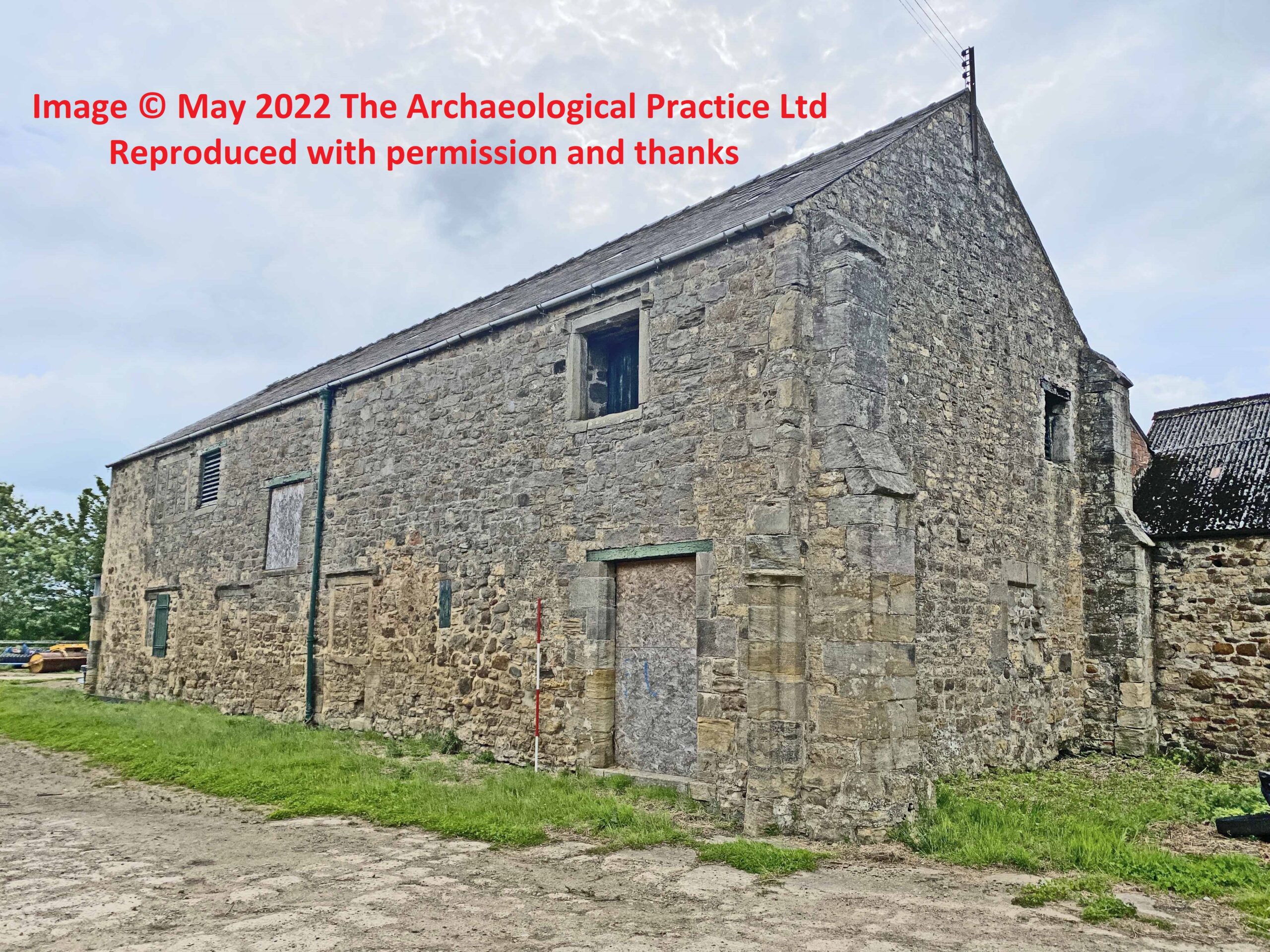Archdeacon Newton Manor

Archdeacon Newton Manor Details
Archdeacon Newton Moated Site is the location of an extensive manorial complex of the Archdeacon of Durham, which was defended by a moat and contained masonry buildings. The site is now occupied by farm buildings, the Old Hall may survive as a barn.
- Closest To: Darlington
- Access: No Access
- Grid Reference: NZ254171
Archdeacon Newton was a property that was held by the Archdeacon of Durham Cathedral, and the moated manor was accompanied by a small village, most likely made up mostly of people working on the Archdeacons land. The manor itself was protected by a rectangular wet ditch, which survives in part, and this had an external upcast bank on the south-east side. The whole settlement was protected by a ditch, parts of which can be seen on LIDAR imagery, and the manor may have had an additional enclosed area between it and the settlement, probably containing orchards. The platform of the manor is occupied by farm buildings, one of which (known as the Old Hall) might survive from the medieval period and represent a wing of the manor. That the manor was a considerable residence in 1570 is given by an account which lists the “Hall, the Parlour above the Hall, the Chamber over the Hall, the New Chamber, The Little Chamber, the Loft beneath the Doors, the Buttery, the Kitchen and the Stable.” (Quote from Gatehouse Gazetteer entry).
The manor is now the site of a working farm, named Hall Farm, and it is not open to the public. An archaeological report produced by The Archaeological Practice in May 2022 reports that with the exception of the Old Hall there is little of historical significance remaining above ground earlier than the layout of the 18th/19th century buildings on the platform. The report assesses the Old Hall as late 13th or early 14th century, substantially remodelled in the 16th century. It states that the hall was probably a serving wing with a high status room above, perhaps the Archdeacon’s solar hall. The main hall building seems to have been to the east, but has vanished altogether beneath the later buildings. By the mid 15th century, the village had largely been abandoned, with the manor remained functional as a large farm thereafter. The Archdeacon at that time was George Neville, the brother of Richard “The Kingmaker” Neville, Earl of Warwick. He was also Archbishop of York, and was repeatedly in prison in the 1460s. After the Reformation, the Newton was often leased out from the Archdeacon as an estate containing four farms and a township, and presumably declined, the buildings being used as a quarry for later agricultural purposes.
Become a supporter of my work to access a more detailed history
